As the number of video game remakes, remasters, and spiritual successors grows, so does the hesitation surrounding these projects. Though some might see these games as loving homages to the art and stories that made us who we are, it’s just as easy to see them as attempts to bottle lightning–or perhaps, more accurately, nostalgia. So, how do these games set themselves apart? Well, as Rabbit and Bear Studios’ debut title Eiyuden Chronicle: Hundred Heroes–a spiritual successor to legendary RPG Suikoden–proves, having a team of veteran developers united under a beloved series’ creator is a great place to begin.
Rabbit and Bear Studios launched back in 2020, with four ex-Konami developers at its helm: character designer Junko Kawano of Suikoden fame, Castlevania: Aria of Sorrow director Junichi Murakami, Suikoden and Silent Hill’s Osamu Komuta, and Suikoden’s creator, the late Yoshitaka Murayama. The team came together with a very clear purpose: to create the game the four of them had always dreamed of making, Eiyuden Chronicle: Hundred Heroes.
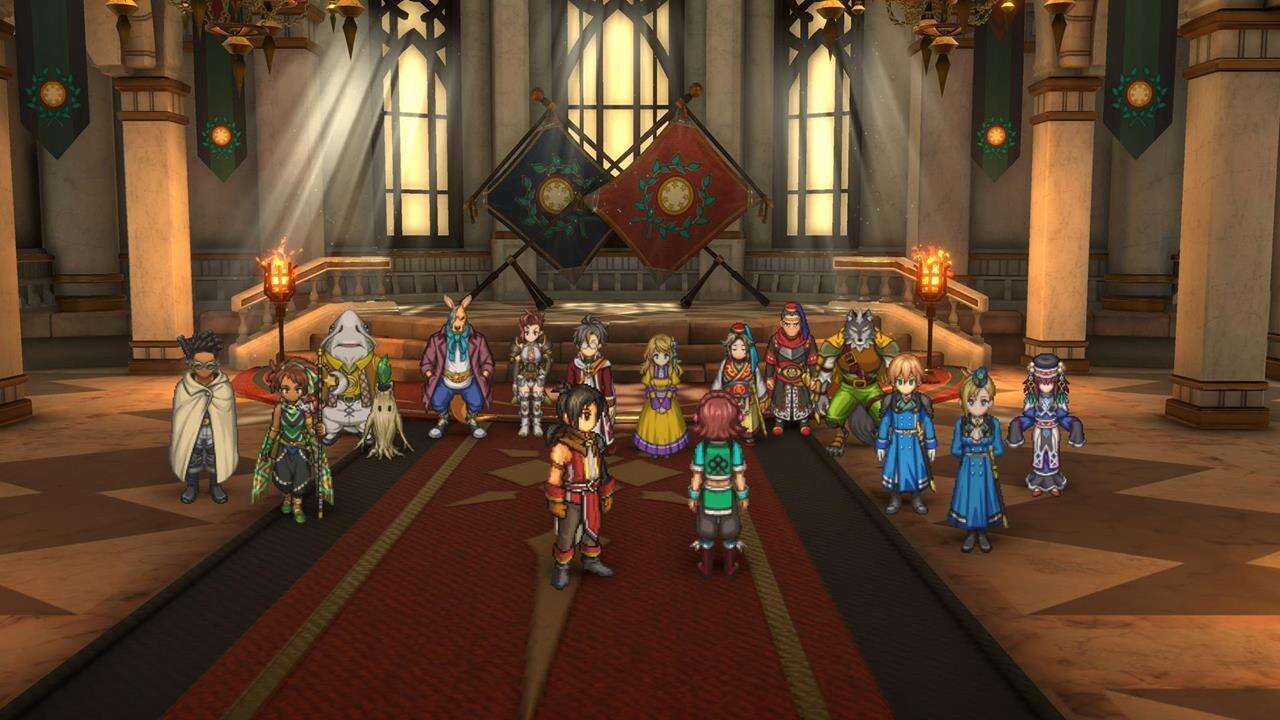
“All of us are ex-Konami, so we’d meet up and drink together sometimes,” Junko Kawano told GameSpot. “One time when we were drinking and talking to each other, we sort of realized that we’ve reached a good age, and that we really wanted to develop a game that we were deeply interested in together. So we decided to form the studio.”
After the studio had been formed and the team cemented their vision for the title, they decided to launch a Kickstarter to help fund the project. Though the studio opted to not explicitly refer to it as a spiritual successor to Murayama’s Suikoden series in the description, fans quickly made a connection between the team’s vision and the critically acclaimed series. Within three hours, Rabbit and Bear raised over $500,000, exceeding the initial goal they had set for themselves.
In the days that followed, stretch goals were added, with the promise of a companion game being released if the studio hit its astronomical end goal of $4.5 million–it did, and Eiyuden Chronicle: Rising was released on May 10, 2022. However, massive crowdfunding success–and the weight of being an assumed spiritual successor–comes with a lot of pressure.
“Since I am the person least involved with Suikoden, I think I’m also the one most outside of all the pressure. It (was) probably the easiest for me,” art director Junichi Murakami said. “However, I know a lot of the people at Konami. I understand the feeling and the weight of that title. Even if I am not directly related to that title, I know I am making a game with those members. I feel that pressure.
“The target for us was really how much we could realize the thing that Murayama-san wanted to achieve. In that sense, I believe Murayama-san was actually under the greatest pressure,” Kawano added.
Yet for as much pressure as Murayama had placed upon him, Kawano, Murakami, and Komuta made it clear he was driven by a very specific vision for his next–and regrettably final–project. From the very beginning of Eiyuden Chronicle’s development, Murayami knew who the game’s protagonists would be. He had a clear idea of what they would look like, how they would fit into the world, and how their stories would collide and conclude. He conveyed this all to his team, who then set out to bring his visions to life while also showcasing the experience and artistry they had acquired over decades of working in game development.
“I started by learning about the setting made by Murayama-san. For the main characters, he gave me the information first. So I knew this would be their age, this was the kind of weapon they would carry …Even some of the hair colors were predetermined,” Kawano said. “I took all the information I received from Murayama-san and came up with different versions of these characters. And then he said, ‘Yes. Now keep going.'”
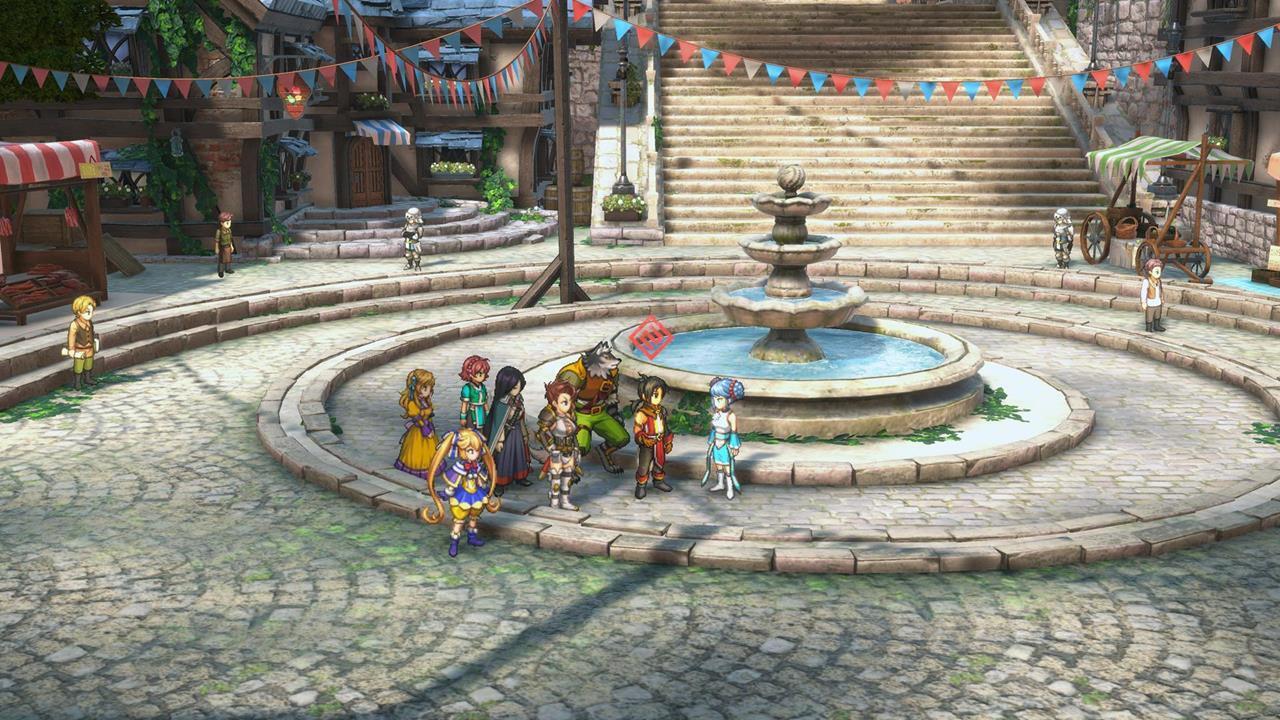
As the latter half of Eiyuden Chronicle: Hundred Heroes name implies, the team–and particularly Kawano–then created over a hundred recruitable characters for the game. Throughout development, it became a group effort to balance these characters–ensuring each one had an interesting design and role in Eiyuden Chronicle, while also making sure the game’s core thread and main cast weren’t buried underneath it all. It’s a delicate balancing act that, Komuta says, can be “difficult to strike.”
“As for the characters related to the main story, Murayama-san had determined their stories so the backbone was already established,” Komuta told me. “However, for the characters other than the main characters, the timing in which they join, their background, and how that person develops, was more open. There was a setting, but we had to actually deepen the story and the design.”
Thanks to Murayama’s fantastical setting, the sheer amount of characters that needed to be designed, and Rabbit and Bear Studios’ own creativity, the team was able to dream big while filling out Eiyuden Chronicle’s roster. From Mellore, a self-proclaimed magical girl adorned in a Sailor Moon-esque uniform, to Kawano’s favorite character, a luchador named El Alicante, Eiyuden Chronicle has quite the colorful cast–and I’ve yet to even mention the giant, sword-wielding kangaroo.
That’s not to say, however, that there aren’t plenty of realistic or edgy characters in Eiyuden Chronicle as well. It might come as little surprise given Murakami’s history with the Castlevania series, but his favorite characters were a pair of “cool-type” women he created.
“Mio and Hildi are my favorites. Mio is a woman samurai warrior and then Hildi is the assistant commander to Seign, and I actually created both of them by myself. Both of them are women with a “cool-type” personality because…” Murakami gave a coy smile, and I watched as both Kawano and Komuta began to laugh. “I like cool women.”
Similarly, Komuta shared that his favorite character was also a strong woman: General Elektra.
“Originally, Elektra was not supposed to participate in battle, but because I liked her so much, I asked Murayama-san and Murakami-san if we could increase the number of characters so we could add her,” Komuta said.
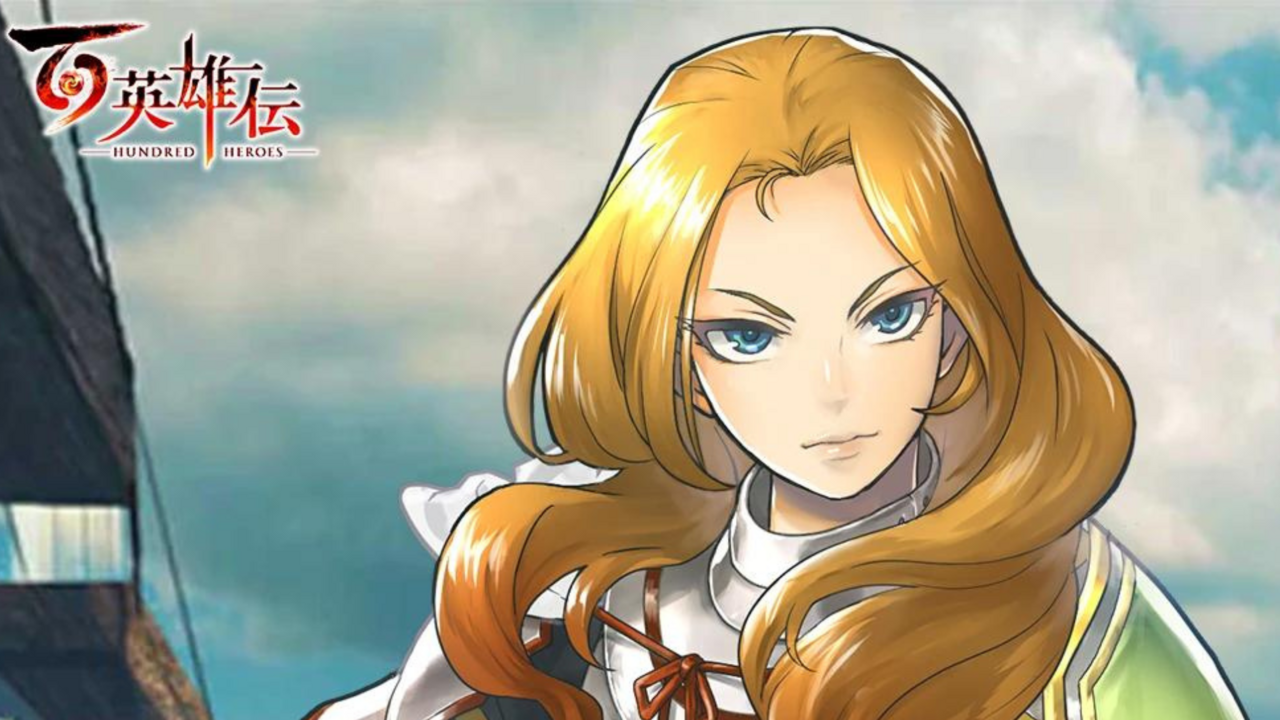

Though Murakami might not have been in charge of designing all Eiyuden Chronicle’s characters, implementing them into the game’s hybrid art style fell upon his shoulders–and, according to Murakami, this process was difficult and time-consuming. Similarly to Octopath Traveler, Eiyuden Chronicle places expressive, 2D character sprites atop 3D environments to create an experience that feels lush and modern, as well as in line with its ’90s-RPG roots. Though I found the end result beautiful and extremely natural-looking, Murakami said ensuring that was the case took the team about two years.
“Merging those art styles is actually very, very, very hard,” Murakami said. “It took us more than two years because you have to make sure all your 3D angles and camera work do not disrupt the 2D expressions, or make them look placed unnaturally, or clip anything… It actually took a lot of time to make it seem perfectly natural.”
Merging the old with the new was a recurring theme in Eiyuden Chronicle’s development. Komuta, for example, recalled the team having a conversation around a classic, ’90s-RPG feature that some were worried might be a little outdated: the save point.
“We did have a discussion,” Komuta said. “The save point was actually very important to Murayama-san’s concept, as it gives you an indication of how the scenario is progressing. He had a strong focus on conveying when the game could naturally be suspended by using a save point. But on the other hand, in order to strike a balance between this classic feature and something modern, we incorporated some auto-save functions. We want to have a good balance between the modern and the classic.”
Some things, however, were set in stone from the beginning–including the game’s music. When it comes to which musicians would create Eiyuden Chronicle’s score, Murakami said that even before launching their Kickstarter, the team was set on two artists in particular: Michiko Naruke and Motoi Sakuraba.
“We knew that, alongside the four of us, they would really be the core and one of the strongest appeals of this project,” Murakami said. “In that sense, we knew we wanted Michiko Naruke and Motoi Sakuraba to join us. We felt they were artists that really represented Japan while also being well-known overseas.”
Both Naruke and Sakuraba have an impressive number of well-received games under their belt, with Naruke’s most notable work being her arrangements for the Wild Arms and Super Smash Bros. series. Meanwhile, Sakuraba’s portfolio includes a number of titles from the Tales, Star Ocean, Golden Sun, Dark Souls, and Mario sports series. Together, the pair created a soundtrack both I and GameSpot’s reviewer found “superb,” and truly proves Murakami correct: These artists did contribute significantly to Eiyuden Chronicle’s core appeal.
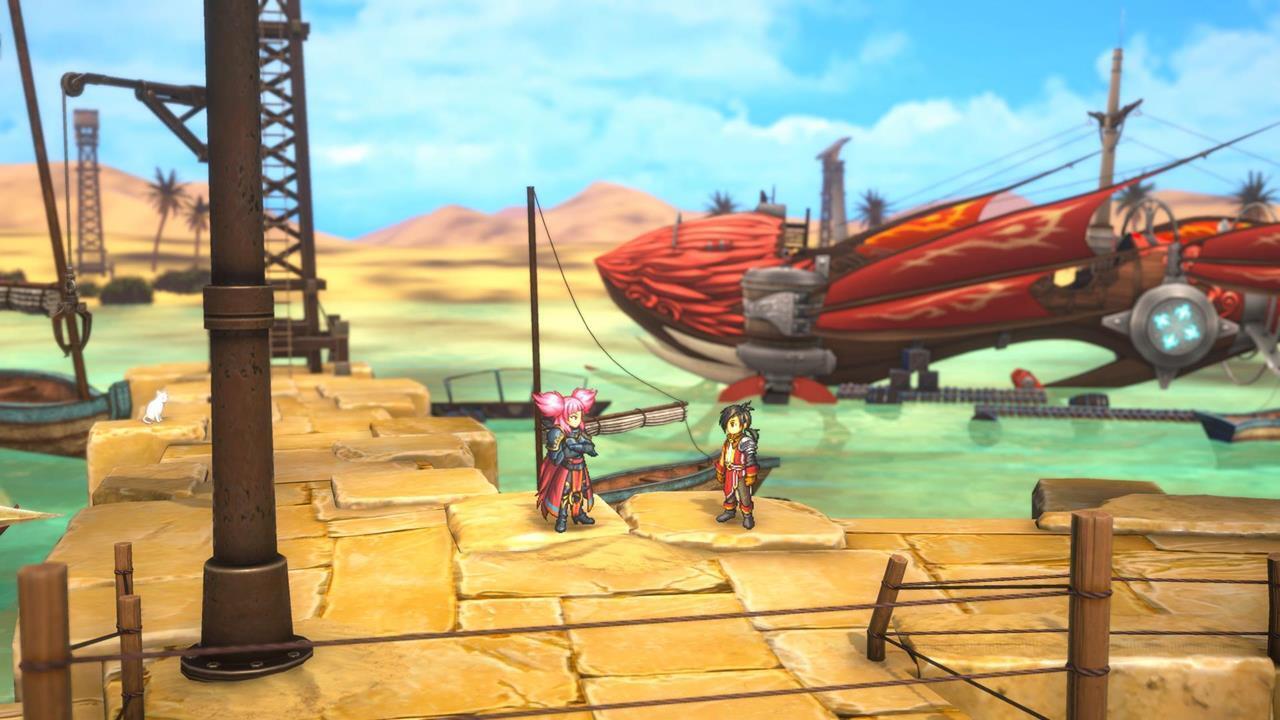

Other factors that add to Eiyuden Chronicle’s appeal are simply how much fun it lets you have and its sheer replayability. According to Komuta, the timing in which you add a character to your party can change the script and how the character speaks, enticing players to replay and attempt to grab characters at different points throughout the game.
“There are certain scripts you cannot hear in the early scenario because they are tied to a character becoming a member in the latter part of the game. So in that sense, if you are replaying the game, you can maybe find these characters in their first place and hear a different script if you previously picked them up in the second place. For all of those characters, we have prepared those scripts,” Komuta said.
Additionally, some of the game’s recruitable characters are optional, meaning it’s very easy to miss them your first time playing. And yet, this is a very intentional part of Eiyuden Chronicle’s design, Komuta said. According to Komuta, “How you find heroes and members of your party is a fun and important part of the game.” He then added there is one character in particular, hidden within a hidden dungeon, that he recommends players try to find. “It’s fun,” he said with a laugh.
Kawano and Murakami also pointed out that some of the game’s funnier moments–such as the theater and the hot springs–play out differently depending upon your current team composition.
“The theater, I think, is interesting. In both the Japanese and English versions, the voice cast acts according to the ongoing story. You can actually have different (character) combinations and different things will happen according to these combinations,” Kawano said.
Keeping in line with his more mischievous statement earlier, Murakami said the onsen–or hot springs–was one of his favorite parts. Naturally, all three of the founders began to laugh.
“I think fans will have fun with the hot spring scene. I want you to actually find and watch all of the hot springs scenes with all of the characters. Particularly when they enter the bath.”
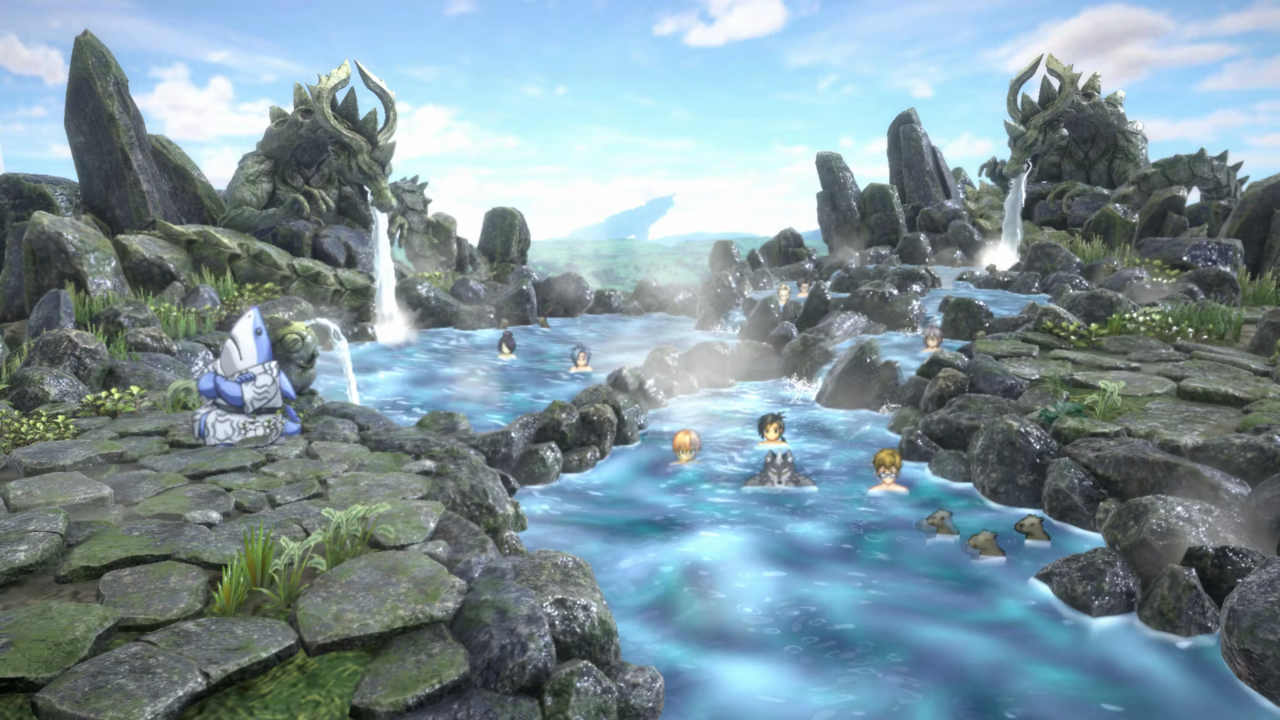

In the few hours I spent with Kawano, Murakami, and Komuta, I can’t count the number of times their laughter filled the room. From the team chuckling while sharing stories about the game’s development, to a near teary-eyed Komuta giggling as I explained that, in English, we call cats kneading “making biscuits,” there was this sense that this team exuded levity and joy. The founders stated that Murayama was perhaps the most joyous of all of them, constantly dreaming, laughing, and inspiring their work. When I shared my condolences and asked how things have been at the studio since his passing earlier this year, I could feel the weight of his loss begin to fill the room.
“It was a big shock to us,” Kawano said. “We were already in the process of producing the title and the release date had already been determined, so we were in this final stage and not really able to halt production.”
“In that sense,” Murakami added. “It was almost a relief. We had to apply and concentrate ourselves–we haven’t had time to lament his death. We have to keep going.”
Komuta nodded in agreement with Murakami, before adding in something that warmed my heart.
“Fortunately, Murayama-san was involved in the final adjustments, so we were able to really complete this title.”
Before our time was up, I asked the team what they thought really distinguished Eiyuden Chronicle: Hundred Heroes from being a Suikoden successor. Ultimately, Komuta said that the team’s experience, desires, and approach to creation are what elevates it.
“There is no member of staff involved in development who thought we were just making a sequel to Suikoden,” Komuta said. “No one was thinking like that, or came at it from that place. It ultimately is a totally different game.”
And yet, I don’t think it’s inaccurate or wrong to say that, in many ways, Eiyuden Chronicle: Hundred Heroes is a spiritual successor to Suikoden–and a worthy one, at that. To be one of the handful of studios that can bottle lightning–that can create an experience that makes players fondly recall playing one of their favorite games–is an incredible feat. Yet at the same time, it’s much more than that.
Eiyuden Chronicle is a game four friends decided to make over drinks and jokes about needing to get started before they got any older. It’s a game that seeks to grant nearly three decades of wishes made by both Suikoden fans and the series’ creators. And most importantly, it’s a shining example of an artist’s final work fully realized. It is wondrously cathartic to know Murayama was there to deliver the last rounds of edits and adjustments–to know that he was there to witness his vision brought to life. And yet, it is perhaps just as beautiful to see how deeply his dreams inspired his three dear friends, each of whom have spent the last few months ensuring the rest of us could see them, too.
